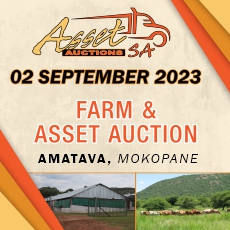Pig Farming in South Africa
Pig Farming in South Africa can be on a commercial scale or on a small-scale to boost household income.
The commercial pig industry in South Africa is relatively small with a few modern piggeries with modern facilities, high feeding costs and excellent genetic material.
South Africa also has thousands of subsistence and small-scale farmers producing pork meat for families and communal use. These small farmers often deal with rudimentary housing facilities and feed.
SouthAfrica.co.za essentially offers a guide to pig farming in South Africa, made up of educational agricultural material in all 11 South African languages. With a range of agricultural articles in an easy-to-read format, pig farmers of South Africa will be able to farm better quality pork under sustainable and safe conditions.
The Pig Industry in South Africa
In 2017, pork still ranked as the most popularly produced meat.
The pig farming industry of South Africa has changed quite drastically over the last few decades. The world's climate is getting warmer and drier and agriculture is under more pressure to produce nutritious and cheap food for Earth's growing population. Despite this, the "developed world" is throwing away a third of the food that is grown for human consumption, while many countries are still desperately short of protein to provide the full range of essential amino acids needed in a human’s diet.
The world's meat industry is adapting as a natural consequence and is producing a range of proteins to fill the major needs in poor-resource communities.
Main Meat Sources of the World
Pig production can help to address the growing demand for animal protein.
Total global meat production is reliably recorded and reported by the Food and Agriculture Organization of the United Nations (FAO). In 2017 a total of over 350 million tonnes of meat protein were consumed. The world's most popular meats were in order of production (millions of tons) were: pork (112), poultry (107) bovines (88), sheep, goats, ostriches and then several hunted or herded species which include reindeer, moose, feral and wild boar, antelope, buffalo and African buffalo and kangaroo.
The other protein source in the human protein diet is seafood. This includes fish, crustaceans, molluscs contributing a total of 170 million tonnes of animal protein. Other food groups such as vegetables, fruit, green salads, nuts, grains, milk, eggs, cheese and bio-technical creations from laboratories (these may become major players in coming years) have a vital role to play in providing other foodstuffs: Carbohydrates as energy sources, fibre, minerals, vitamins and clean water and usually some protein.
Meat Consumption in South Africa
Between 600 to 5 000 sows are kept in large scale commercial units.
It is said that South Africa (SA) has no more than 15% arable land and the increasing demand for human food necessitates animal production with high-yields in intensive systems. To supply good quality protein for 55 million people, pigs and poultry are being farmed successfully in "factory farms" in South Africa, yet only 0.5% of the world's pork is produced in South Africa. South Africa consumes about 200 000 tonnes of pork meat (fresh and processed) per year.
Our own production amounts to 182 000 ton (2.6 million slaughter pigs with an average carcass mass of 70 kg) and we import another 25 000 tonnes. This represents just under 4 kg per person per year more than the African non-Muslim population but insignificant compared to people in Asia, Western Europe and North America. Import countries include Germany, France, Spain, Canada, Brazil and the USA. Frozen and specially treated cuts like spare ribs made up 60% of the imports.
South Africa exports a small amount of pork to Namibia, Mauritius and Mozambique. Ten times more poultry than pork is consumed in South Africa at a similar price per kilogram indicating a huge potential market for fresh and processed pork products.
Pig Production in South Africa
Feed can make up 75% of the cost of production.
The pig industry in South Africa has three main sectors. Large-scale modern, efficient, intensive production units have between 600 and 5 000 sow units. There is a tendency for farm units to "get big or get out".
The advantages of the economies of scale apply to input costs and marketing. The middle and small commercial pork producers in South Africa are getting fewer and unless they find a niche market or have other income, they are vulnerable to the rising costs of balanced feed which makes up 75% of the running costs in a piggery.
The thousands of small pig farmers with a very low input cost of housing and feed. There is little incentive for them to put up housing and buy balance feed as they have no permanent security of tenure. With shelters from scrap material and expired feed (often low in protein), they can nevertheless make a significant financial contribution to their own family's finances.
Small scale production can help to boost household income.
The Versatility of Pork Meat
The South African Pork Industry’s focus on the production of leaner meat has resulted in South African pork having lower fat than pork from many other countries. Besides this, South African pork is a nutrient dense food, rich in essential amino acids, vitamins and minerals, with low amounts of cholesterol and saturated fatty acids.
The South African Pork Producers Organisation (SAPPO) in The Complete Guide to South African Pork lists the following as popular pork cuts.
Thick Rib Chops
Thick rib chops are cut close to the neck end of the carcass and, according to The Complete Guide to South African Pork, are the juiciest, most tender chops you will find. It is ideal for grilling or pan frying. The thick rib may also be cut into cubes for kebabs, stir-fries, curries or stews.
Alternatively, the shoulder blade can be removed, tied or put in a mesh pocket for a delectable oven roast, or the shoulder cushion may be cut from the large muscle of the shoulder. The cushion is a boneless lean cut with good flavour, best for oven roasting.
Rib
The rib can be deboned and rolled or left with the bone in for an oven roast or cut into chops that are ideal for pan frying, barbeques or grilling, with or without marinade or a basting sauce.
Loin
The loin may be used as an oven roast with the bone in or boneless, with the roast being called a saddle if the loin is not split into two pieces. The loin may also be cut into tender and tasty chops, which can be fried, barbequed or grilled, with or without marinade or a basting sauce.
Chump
Chump can be deboned or enjoyed whole on the leg as a big oven roast. The chump may also be cut into chops, which are like the rump steaks of the pork carcass, according to The Complete Guide to South African Pork. The chops can be grilled, pan-fried or barbequed, with or without marinade.
Leg
A whole leg is a tasty and economical way to serve a big group of people. The butcher can remove the bone and tie the leg up to ensure an even shape and easy carving once cooked. The leg can be divided into two smaller roasts, the thick flank and silverside, or cut into cubes or strips for kebabs, stir-fries, stews or curries. Alternatively, schnitzels, steaks or chops can be cut from the leg to be pan-fried, grilled or barbequed.
Shanks and Trotters
Whole shanks are often cured and smoked to produce “Eisbein”. It may also be sliced into smaller pieces, which are best for slow-cooking dishes, such as stews, potjiekos and curries.
Belly
The belly may be enjoyed whole, with or without the bone, as a juicy oven roast or sliced into strips, rashers or streaky pork. According to the guide, these strips are best when grilled over medium-hot coals, with or without a basting sauce or marinade.
Breast
The breast is where spare ribs are cut from. They can be marinated, basted and grilled in the oven or on coals. The breast can also be used whole as an oven roast, with or without








